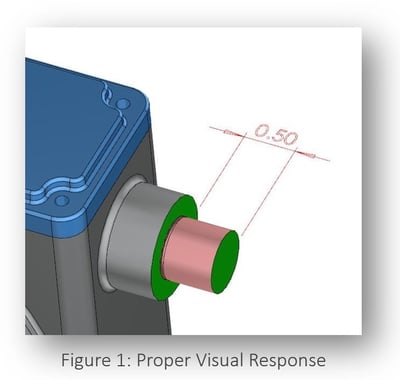If you use 3D PDF on a 64-bit operating system and have noticed issues, this is the post for you. In this post you'll find a brief history of 3D PDF to set context, a breakdown of the 64-bit 3D PDF issues, the good news and bad news of what can be done to fix it, and a brief overview of what's available beyond 3D PDF to help you guard against issues like this in the future.
A brief history of 3D PDF
3D PDF has been used for 17 years as a standard for communicating manufacturing information to anyone with Adobe Reader. It dates back to 2005 and the U3D (Universal 3D) standard that was agreed upon by a number of manufacturers, including Boeing, an Anark customer. And since the release of MIL-STD-31000B, a 3Di PDF technical data package (TDP) update to MIL-STD-31000 in 2018, 3D PDF adoption has expanded significantly. While 3D PDF remains a useful technology for communicating engineering design and manufacturing information across the supply chain, it is a file-based solution with file-based limitations that is dependent on Adobe Reader desktop software.
Anark Supports 3D PDF and Beyond
Anark continues to fully support 3D PDF publishing and viewing for everyone from small medium manufacturers working with the US DoD (Department of Defense) to large model-based enterprises with complex MBD (model-based design) requirements. But we also recognize the need to go beyond the limitations of a desktop file-based solution. Web-based TDPs shared through a content collaboration portal remove those limitations, making data securely accessible and actionable for everyone involved. Advantages of web-based content collaboration include:
- Browser-based visualization of multi-data TDP content: BOM, lifecycle information, 3D, 2D drawings, documents, images, video
- Fully traced communication, contextual collaboration (markups and chat in the context of the shared design data), and file sharing
- Mobile-first user experience supporting paper-less access on any device
- Version-controlled integration with authoritative sources so you’re always looking at the right version of data
- Advanced access-control and security features unavailable with a file-based approach
- Streaming web content with dramatically improved load times
The 64-bit OS 3D PDF Support Challenge
Why is now the right time to consider moving beyond 3D PDF for technical data packages (TDPs) and collaboration across the supply chain? Recently, Adobe has dropped hardware acceleration for 3D model viewing in the 64-bit version of the Adobe Reader and Adobe Acrobat due to Microsoft dropping support for DirectX 9 in 64-bit. As a result, a 3D model in Adobe 64-bit Acrobat/Reader will only be able to use software rendering, which causes the content loading process to run very slowly.

Almost all use cases where 3D models depend on hardware acceleration to work with larger datasets will now render at an untenable pace. With this change, the interactive 3D experience goes from frames per second to seconds per frame. It reduces the value of using 3D and the impact on large model and assembly visualization is significant.
Beyond 3D viewing performance, users will also experience a loss of associativity with their models in the form of PMI visual response. When selecting a 3D dimension, the corresponding associated 3D features should highlight to give instant visual feedback. This is called visual response (shown in Figure 1) and is required by ASME Y14.41 standard such that any annotation must have this type of capability to understand where the annotation is applied as is shown in the above example of a dimension highlighting the faces. This visual response no longer functions properly in 3D PDFs on a 64-bit OS.
Is there anything I can do to fix this?
There are no current solutions or patches to address this problem if you use the 64-bit version. The only possible way to prevent these issues from occurring is to not use the 64-bit version; by rolling back to 32-bit or preventing the 64-bit update. Regardless of the option you choose, now might be the right time to consider web-based TDPs so you can move beyond the limitations of a desktop file-based TDP solution.
For more information, please Contact Us.

